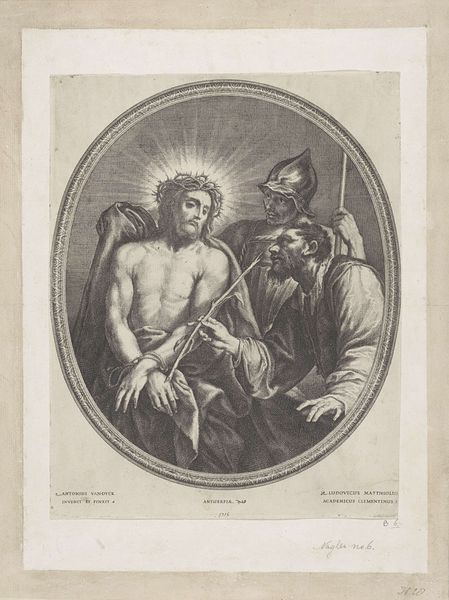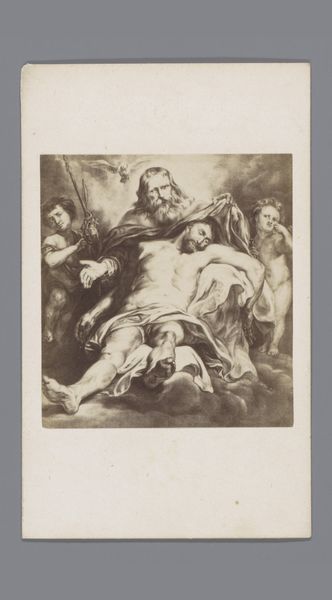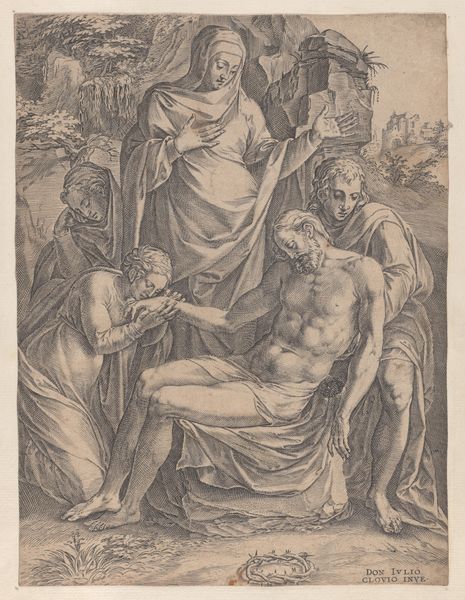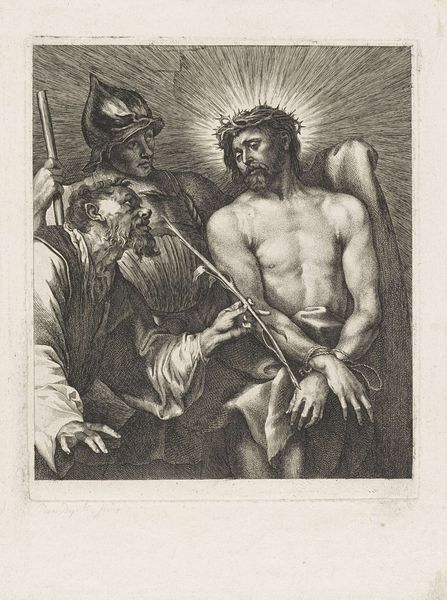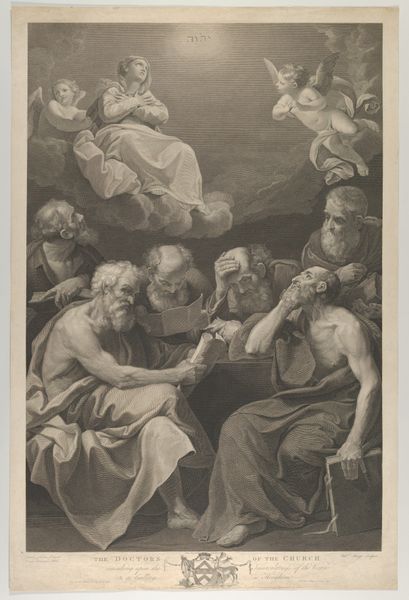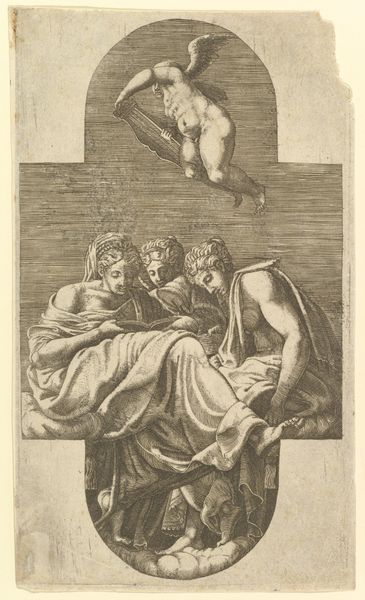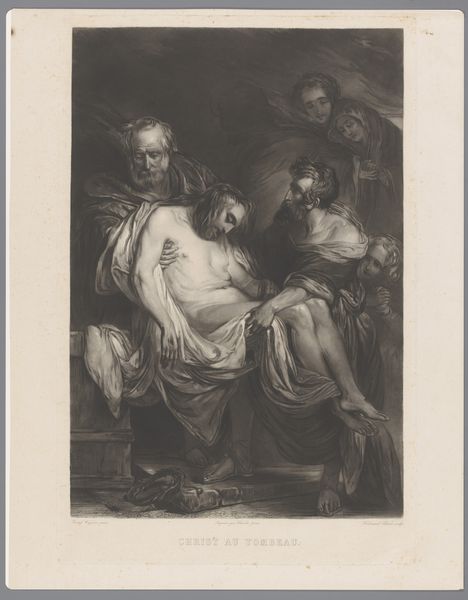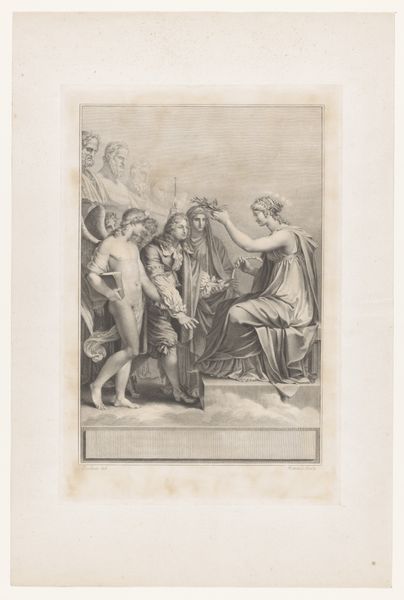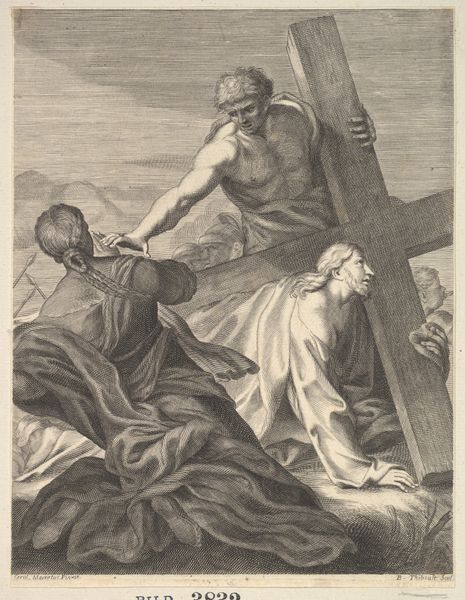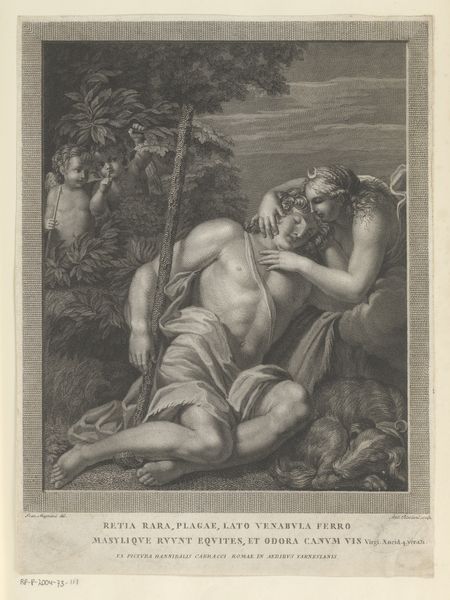
print, engraving
#
portrait
#
narrative-art
# print
#
figuration
#
historical photography
#
strong emotion
#
romanticism
#
history-painting
#
academic-art
#
engraving
Dimensions: height 406 mm, width 342 mm
Copyright: Rijks Museum: Open Domain
Constant-Louis-Antoine Lorichon created this print of ‘Ecce Homo’ in the early nineteenth century. In it, Christ is presented to the crowd by Pontius Pilate, and the print’s inscription claims it was based on a painting by Titian held in the Royal Museum. But this is not just a religious scene, it reflects a specific time and place in French history. Lorichon made this print just after the French Revolution, a time of great social and political upheaval in France. He was part of a generation of artists trained during the revolutionary period, when the idea of art serving a public function was very important. By reproducing a famous image from the royal collection, it gives us insight into how art was used to shape national identity and cultural values in post-revolutionary France. To better understand the context of this print, it is helpful to research the histories of both the Royal Museum where the Titian painting was held and the ways that Christian imagery circulated in nineteenth-century France. In doing so, we might better understand how artists and institutions negotiated the relationship between religious tradition and revolutionary change.
Comments
No comments
Be the first to comment and join the conversation on the ultimate creative platform.
